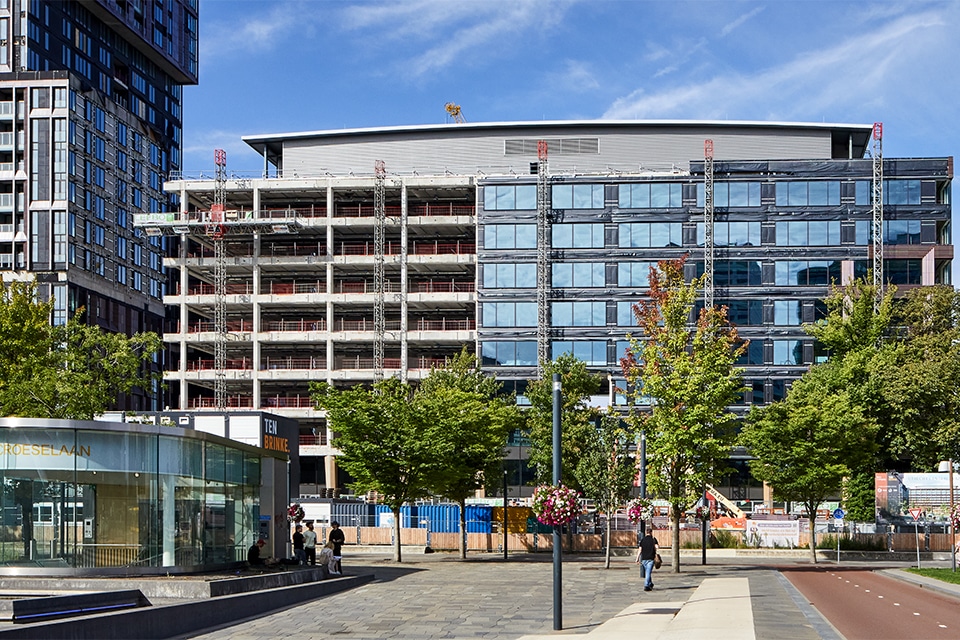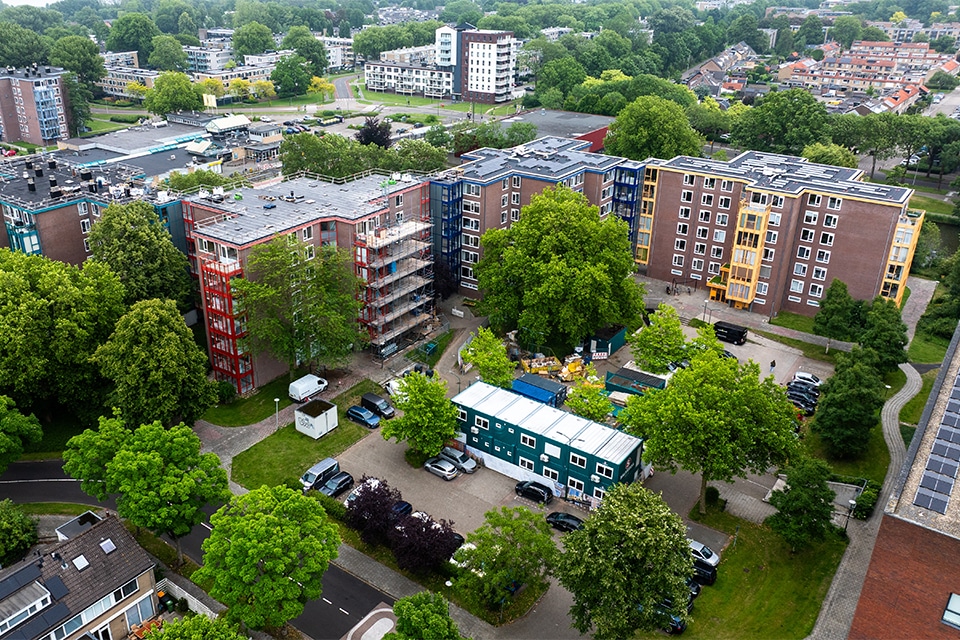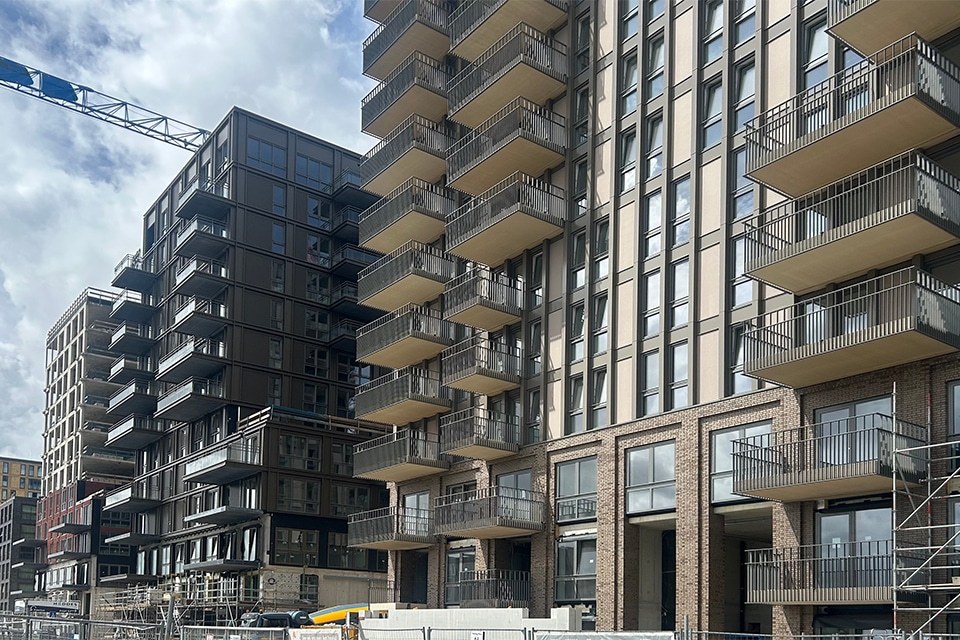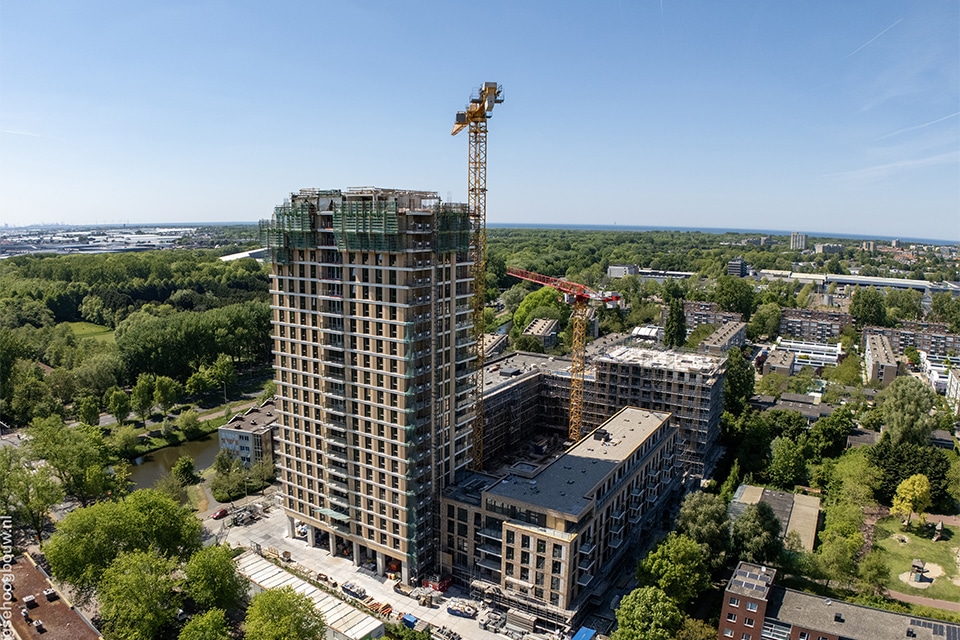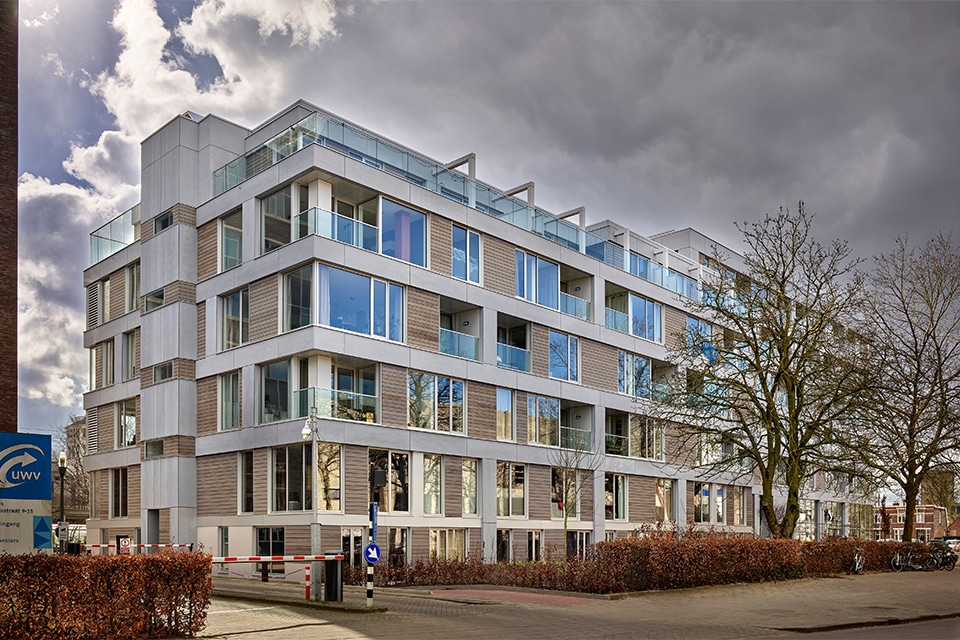
The Veem: from working to living
Third life for former grain warehouse and UWV office
In November 2024, residents took up their long-awaited move into Het Veem in Hengelo. After seven years of vacancy, the former grain warehouse and UWV office on Prinses Beatrixstraat has been given a new life as a residential building with 93 sustainable two-room apartments, eighteen of which are maisonettes. Approximately six hundred square meters of commercial space has also been realized. Commissioned by Hinke Fongers Beheer, FiMek estate developed the plan for the transformation. In addition, the property developer was responsible for the tendering process, permit applications and management of all construction partners, stakeholder management, coordination meetings with the municipality and local residents, and project management.
FiMek estate (re)develops multifunctional inner city real estate in the areas of living, working and shopping. "Our field of expertise includes new construction, renovations as well as redevelopments and transformations," says Han Fijen, director/owner of FiMek estate. "Over four years ago we came into contact with Hinke Fongers Beheer, which was looking for a good use for Het Veem. Built in 1900 as a warehouse and later the home of the UWV, this building was now an eyesore to many Hengeloans. The building had been vacant for quite some time and new tenants were not forthcoming.
What redevelopment opportunities lay here?"

Living as a starting point
"Demolishing and building new is in many cases the easiest route," Fijen acknowledges. "In the context of sustainability and circularity, however, we can no longer avoid redevelopment and transformation. That is why we first examined the possibilities for redevelopment, with housing being the most obvious choice." Both the existing structure and location of Het Veem were ideally suited for redevelopment into a residential building, he says. "One condition was that the shell, layout and installations had to be adapted, in accordance with the requirements of the Bbl. For example, with regard to living comfort, thermal and acoustic insulation. In collaboration with Bloot Architecture, we were able to implement this very nicely."
Wink of yesteryear
Because of its location near the railroad, deaf facades were used, says Fijen. "On the railroad side, for example, soundproof facade screens, balcony glazing and full-glass parapets were applied. Moreover, extra sound insulation has been applied in the facades themselves and between the various housing units. Most of the dwellings are provided with an outdoor space, in the form of a loggia, roof terrace or garden. In combination with the large windows, the building clearly takes on the appearance of a residential building, while the horizontal articulation and concrete bands hint at the days of yore."
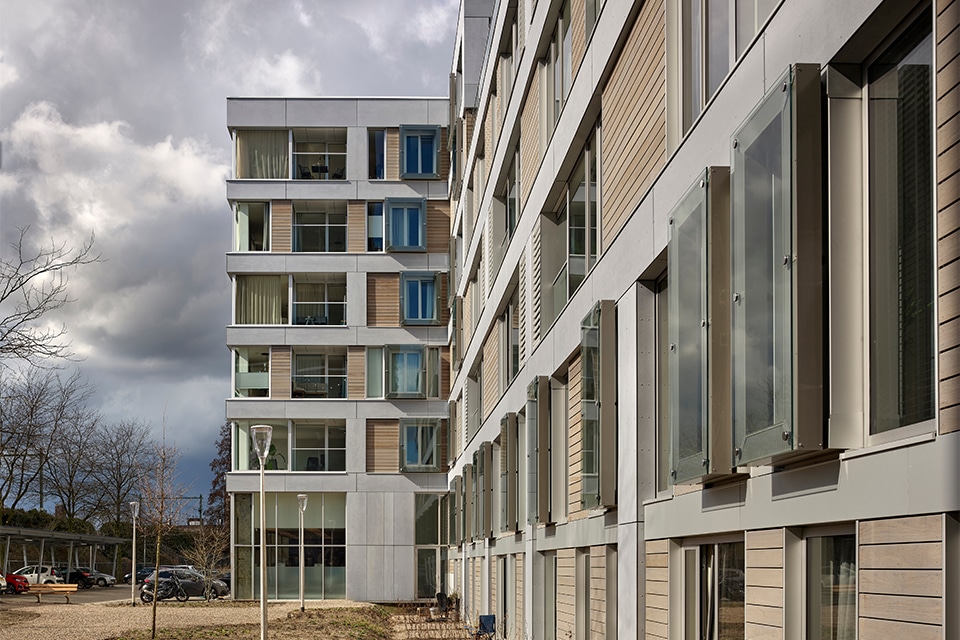
Back to basics
During repurposing, The Veem was stripped down to its concrete skeleton. "The building was reduced to a concrete structure with columns, free concrete floor fields and several rigid concrete cores, which now serve as stairwells or elevators," says Fijen. "Then a new concrete framework was drawn over the building, within which the individual dwellings are fitted. An additional rising point here provides good access to all the dwellings." The first floor is split in two, with a commercial function with large glass plinths on the west side and the eighteen maisonette apartments on the east side.
All properties rented
A few months after completion, Fijen looks back with pride on the redevelopment, appearance and type of housing in Het Veem. "A project is only successful when the majority of the homes are rented upon completion," he says. "With Het Veem, we succeeded in this with flying colors. We have realized both social and middle rental housing, clearly meeting a need. Upon completion, all the homes were rented! What is also special is that we realized this project in just four years - from the first initiative to completion. The energetic attitude of Hinke Fongers Beheer, the municipality of Hengelo and all construction partners certainly contributed to this."
